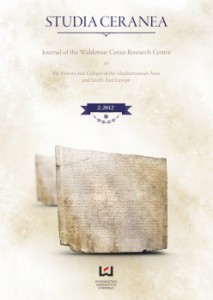Moving through Medieval Macedonia: Late Modern Cartography, Archive Material and Hydrographic Data Used for the Regressive Modelling...
Moving through Medieval Macedonia: Late Modern Cartography, Archive Material and Hydrographic Data Used for the Regressive Modelling...
Author(s): Mihailo PopovićSubject(s): History
Published by: Wydawnictwo Uniwersytetu Łódzkiego
Summary/Abstract: The aim of this article is to illustrate how the rich data which was gathered during the scholarly work on Macedonia, Southern Part (Tabula Imperii Byzantini, 11) as well as on Macedonia, Northern Part (Tabula Imperii Byzantini, 16) from 2002 until 2010 can be combined with applications deriving from Historical Geographic Information System (HGIS) in order to create a case study on the transportation network and on the hydrography of Lake Vegoritis in the historical region of Macedonia. For this reason a holistic approach combining humanities and natural sciences is applied, which comprises not only written medieval sources, which have already been evaluated in the bibliography, but also late modern datasets. Their undisputable value lies in the fact that they convey the state of the respective landscapes before industrialization commenced in South-East Europe. In the near future the author will expand his research in order to cover eight lakes in the southern Balkan peninsula – namely Lake Ohrid, the Great Prespa Lake, the Small Prespa Lake, Lake Petron, Lake Vegoritis, Lake Dojran, Lake Kerkini and the vanished Lake Achianos, which lay on the Thessalonica Front (Macedonian Front) between 1915 and 1918 and on which hydrographic data was gathered before, during and shortly after the Great War. By combining Byzantine and Ottoman sources, travel literature, maps, archaeological evidence and hydrographic data the author ventures to compare different water basins, to discern their impact on the transportation networks through time and thus to reconstruct the landscapes of past times.
- Issue Year: 2012
- Issue No: 2
- Page Range: 165-180
- Page Count: 16
- Language: English

